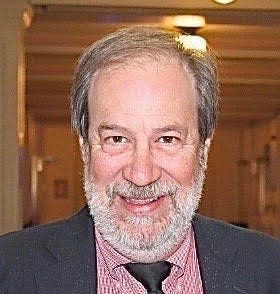Why the names of 13 Black kids, instead of Ten Commandments would be better in classrooms
When I was 6 years old, I was sitting in the living room with my parents in Ponca City, and it was the first time I noticed a KL tattoo in blue ink on each of my parents’ wrists. I was to learn that the letters stood for Concentration Camp. On the inside of my mom’s forearm was the letter A followed by the number 27327. Being the inquisitive people we are at that age, I asked them to explain. Using the least horrifying and simplest of words, they told me they were both survivors of the Holocaust and that almost everybody in their immediate and extended families were murdered because they, like us, were Jewish. That was my first encounter with antisemitism. Unfortunately, it would not be my last.
On Aug. 19, 1958, when I was 7 years old, my dad came home from work and turned on the TV to watch the news and saw something that really bothered him. For the next week, he followed it on TV and in the newspaper. On his next day off work, he came to the backyard where I was playing and said, “Mike, come with me and your mom.” We got in the car and drove to a park in Ponca City where he showed me a water fountain. My dad told me to take a drink. Afterward he asked me how it tasted, and I said, “Great.” He then asked me to notice the sign on the water fountain. It read, “Whites Only.” We then walked to a water fountain not 10 feet away and he told me to take a drink from it, and I did. He then asked me how that tasted. I said it tasted the same as the water over there. He then asked me to read aloud the sign on that water fountain. I said, “Coloreds Only.”
We walked back to car without saying a word. We then drove down to the bus station and walked in. It was a nice area with nice chairs and ceiling fans working to cool the room. We walked up to a podium with a sign on it. My parents asked me to read the sign with them. We all read it, “White waiting area.” We then walked to the back of the bus station to a not-so-nice area. There were broken chairs and no ceiling fans going. It was a hot, sweaty, dirty area. There was a sign nailed on the wall. Once again, my parents asked me to read with them. “Colored Waiting Area.” My dad looked at me, his 7-year-old son, and said, “I want you to always remember what I’ve shown you today. That is the reason you don’t have any grandparents and will never get to meet many of your aunts, uncles and cousins. People looked at them as being different and inferior human beings.” My parents wanted to make sure that I understood the connection between racism and antisemitism.
What my dad saw that day on TV that so bothered him that he wanted to make sure his son understood was the story of 13 young Black students, ages 6 to 16, and their adult supervisor Clara Luper. They walked into Katz Drugstore in downtown Oklahoma City, sat down at the counter and ordered 13 Coca-Colas and were refused service because of the color of their skin. What nobody knew at the time, including the kids, was that their simple, brave action would change Oklahoma City, Oklahoma and American history.
They started the sit-in movement that spread across the nation. It would last for 5 ½ years until President Lyndon B. Johnson signed the Civil Rights Act of 1964.
That is Oklahoma history, state schools Superintendent Ryan Walters. We need to teach it to every student in the state of Oklahoma. We need to tell them the truth. The students of Oklahoma will learn the Ten Commandments in churches, in synagogues, in temples, in mosques … wherever they go to worship. We don’t need them in schools. What should be placed in schools is a list of the 13 original, courageous Black Oklahoma City students who said, “Enough.” Those 13 kids believed in diversity, equity and inclusion. And thus, they helped change Oklahoma and American history for the better.

Michael Korenblit is president of the Respect Diversity Foundation and author of "Until We Meet Again," the true story of his parents during the Holocaust.
This article originally appeared on Oklahoman: Guest: 13 OKC kids helped change Oklahoma, US history for the better
